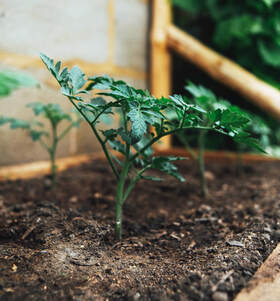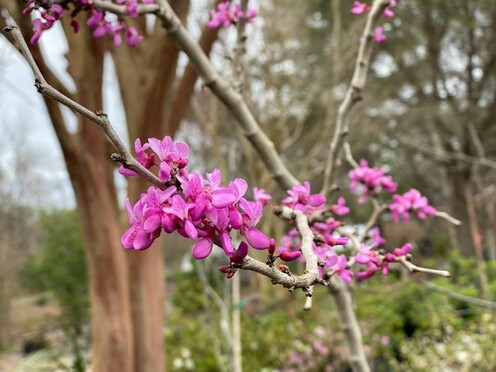Transitioning into Spring  Vegetable Garden: There is still time to plant seeds indoors for warm season vegetables. You won’t get the prize for the earliest crop though. Outdoor light intensity and day length is increasing but for healthy, stocky seedlings use fluorescent or grow lights to provide 16-18 hours of light. Plants should be ready to plant out in April. So far, the winter has been mild but bear in mind that there is still a still a possibility of frost and freezing weather. For the Charleston area, outside of downtown, there is a still a 50% chance of frost on or after March 18th and a 10% chance on April 6th. If you live in the downtown area, buildings and infrastructure help give a much warmer micro-climate. The 50% chance of frost of date February 17th has already passed, and the 10% chance date is March 14th. So, unless you have a well-protected garden spot or use frost cloth for protection, hold off on planting your spring vegetable garden until it’s safe. By mid-March many vegetables can be seeded directly into the garden soil. For exact dates for transplanting and seeding consult the planting chart in Table 3 of Clemson’s HGIC factsheet, Planning a Garden: https://hgic.clemson.edu/factsheet/planning-a-garden/ Lawns: It’s still not time to fertilize warm-season grasses (Bermudagrass, centipede, zoysia, St. Augustine) but there is still time to put out a pre-emergent herbicide for warm-season annual weeds if you haven’t already. It’s best to make the application when air temperatures have reached 65°-70° F for four consecutive days. We had plenty of such days in February and will have more in March. Try to time the application for when rain is forecasted during the following 48 hours. If warm season annual weeds have been a serious problem in the past, you may need to make a second application 9 weeks after the first so be sure to keep a record of applications. It’s best to choose a pre-emergent herbicide based on your most problematic weed since not all herbicides work on all weeds equally. So be sure to correctly identify your weeds. For more information on managing weeds in the lawn please visit: https://hgic.clemson.edu/factsheet/managing-weeds-in-warm-season-lawns/ Ornamental Trees, Shrubs and Hardy Perennials:
Now is the time to fertilize trees, shrubs and hardy perennials (if they are not surrounded by turf). For the most accurate fertilizer recommendations a soil sample should be submitted to Clemson’s Agricultural Services Laboratory. You can either take your sample to your county Extension office, bring it by the nursery or mail it directly to the lab. Spring is the busiest time of the year for the lab so expect delays on getting your results. The best time to submit samples is during fall and early winter months. Specific fertilizer recommendations will be in the results as well as liming recommendations. For more information on taking a soil sample please visit: https://hgic.clemson.edu/factsheet/soil-testing/ If you don’t soil test, use a complete fertilizer such as a 16-4-8, 12-6-6 or 12-4-8 formulation. For the sandy soils of the coastal area slow-release fertilizers work best. Clemson recommends that shrubs and trees receive 2 to 4 pounds of actual nitrogen per 1,000 square feet of root spread area per year. Split applications work well so apply half of the recommendation now and the rest in early summer. Apply the fertilizer over the whole root spread area underneath the crown of the shrub or tree and out beyond the crown at ½ of the crown radius. For perennials, spread fertilizer away from the base of the plants over the root zone. Be sure to water fertilizer in well and off of any plants. If applying fertilizer over mulch more water may be needed to get the fertilizer into the soil under the mulch. For formulas to calculate actual needed amounts of fertilizer please visit: https://hgic.clemson.edu/factsheet/fertilizing-trees-shrubs/ Annuals: Winter flowering annuals should still look good if you have been keeping them watered, fertilized and dead-headed. By the end of this month though they may be struggling with warmer temperatures. Be planning now on your summer annual replacements and be prepared to take out still blooming winter annuals to give the summer ones a good start before temperatures soar. As always, be sure to try a new plant or new color combination to help jazz up your landscape. |
Categories
All
Archives
June 2024
|


 RSS Feed
RSS Feed



